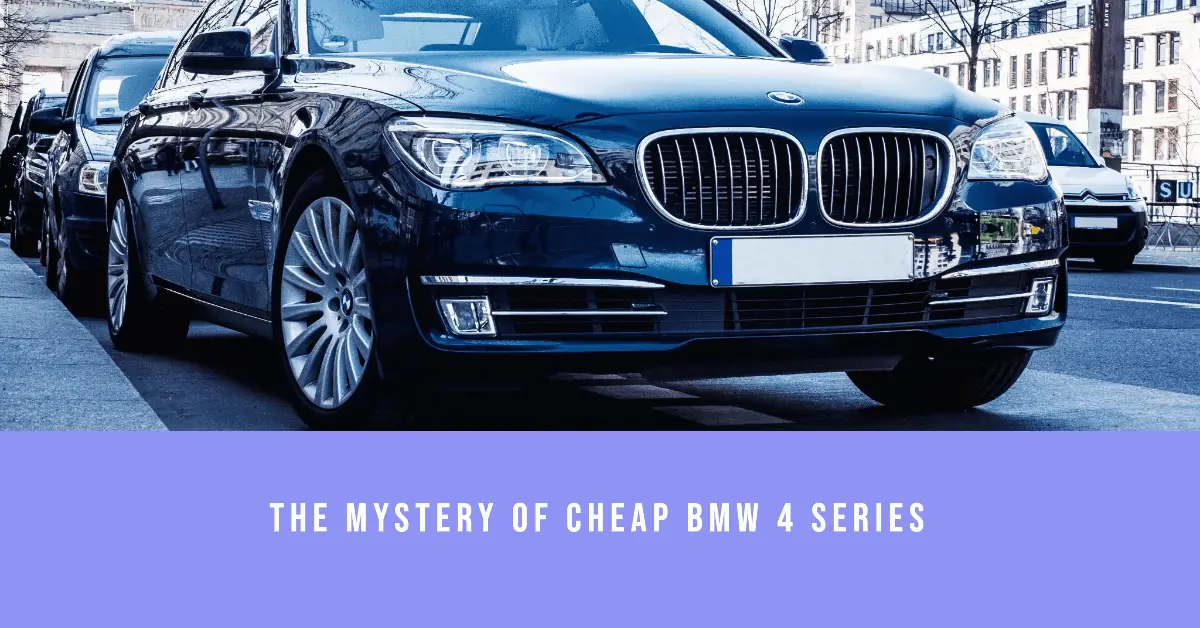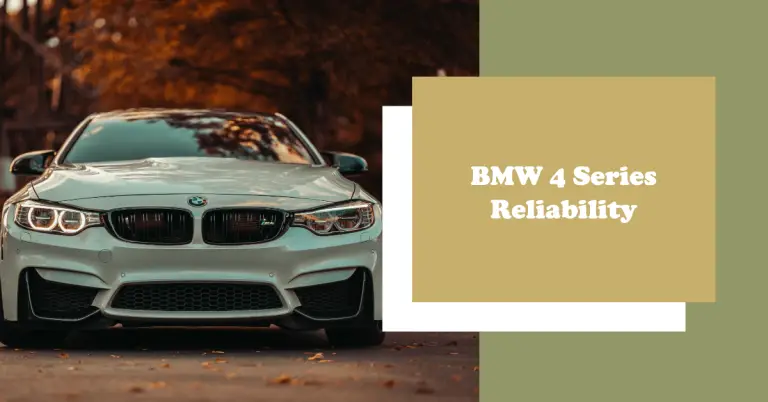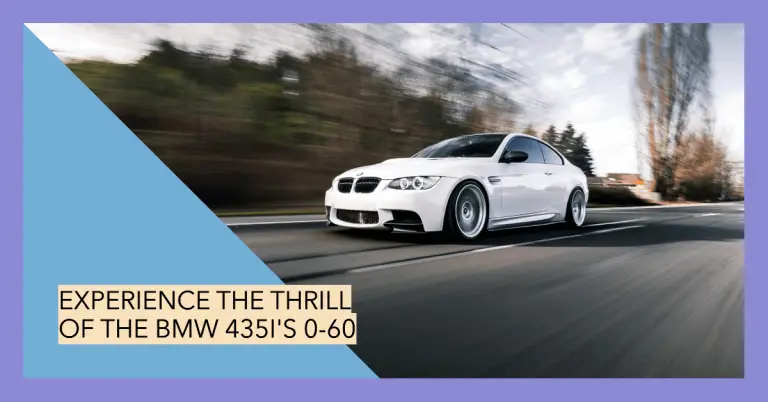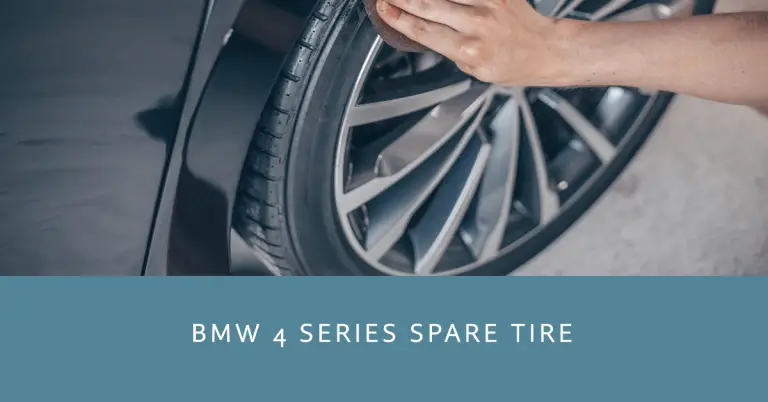Why Are BMW 4 Series So Cheap? Explained
BMW is known around the world as an iconic luxury and performance brand. Their vehicles command premium pricing across model lines that reflect their prestige, driving dynamics, and German engineering. However, there is one exception in their lineup that seems to defy BMW’s luxury positioning – the 4 Series.
So why are BMW 4 Series models so much more affordable than the higher-end 3 Series, 5 Series, and other BMW models?
The 4 Series lines offer much lower MSRPs compared to the rest of the BMW family. There are strategic reasons why BMW offers these vehicles at budget-friendly price points despite their reputation as a luxury brand.
In this article, we’ll explore the key factors that contribute to the relatively inexpensive pricing of BMW 4 Series coupes, convertibles, and gran coupes. We’ll look at how production costs, target demographics, included features, performance specs, interior materials, and more impact what consumers pay for these entry-level luxury vehicles.
Understanding the reasoning behind the 4 Series’ budget pricing empowers buyers to make an informed decision when considering one of these models. You can assess if the lower quality and performance tradeoffs are worthwhile to gain access to BMW’s lauded driving dynamics and brand cachet on a budget.
Lower Production Costs Contribute to Cheaper Pricing
One major reason the BMW 4 Series lines are more affordable comes down to basic production costs. Building vehicles is an expensive process, and the materials used contribute significantly to the final MSRP buyers pay.
Compared to pricier BMW models like the 3 Series and 5 Series, the 4 Series utilizes some less expensive materials and components to reduce manufacturing costs. These savings get directly passed onto the consumer through cheaper pricing on new 4 Series vehicles.
For example, the interior on the 4 Series makes greater use of hard plastics on surfaces like the dashboard and door panels. The higher-end 3 Series employs more soft-touch plastics with a more premium look and feel. Additionally, the leather upholstery found in pricier BMW models gets traded for vinyl leatherette in 4 Series cabins.
The 4 Series also offers less sound insulation compared to other models. This allows more road and wind noise into the cabin, but reduces weight and material costs. Heavier sound insulation adds expense. Finally, some standard analog gauges get replaced with digital displays on the 4 Series since they are cheaper to produce at scale.
These are just a few examples of how BMW keeps production costs down on the 4 Series. Lower grade materials ultimately contribute to the cheaper pricing consumers enjoy. The trade-off is a perceived reduction in interior luxury and refinement.
Positioned as an Entry-Level Luxury Car
In addition to lower production costs, BMW also intentionally positions the 4 Series as an entry-level luxury model. This influences their ability to offer base models at price points in the $45,000 – $55,000 range, whereas most other BMW sedans and coupes start above $55,000.
The target demographic for the 4 Series is younger professionals and those new to the luxury market rather than established BMW loyalists. To appeal to these budgets, BMW strategically crafted an entry-point into their brand through the 4 Series line at a relatively affordable price considering its prestige.
Comparable entry-level luxury competitors from Audi (A5) and Mercedes-Benz (C-Class Coupe) are priced similarly in the same $45-$55k MSRP range. So while cheap for a BMW, the 4 Series is aligned with rival base-model pricing.
As the most affordable BMW coupe or convertible available, the company is able to bring younger, aspirational buyers into the brand. Some portion of these consumers end up trading up for more expensive BMWs down the road after becoming loyalists.
Reduced Technology and Luxury Features
Another calculated move by BMW to make the 4 Series more affordable is equipping models with fewer luxury tech features and amenities compared to higher-end lines.
These purposeful omissions of premium features account for meaningful pricing differences between mainstream 4 Series trims and posher models:
- Basic climate control rather than auto dual-zone systems
- Fabric upholstery instead of standard leatherette or leather
- Manual seats without power adjustments or memory functions
- Smaller infotainment screens under 10” without touch capability
- Fewer speakers deliver adequate but unexceptional sound
- Basic analog gauges instead of all digital display clusters
- Halogen headlights instead of adaptive LED lighting
- Manual liftgate instead of power open/close
- Basic security system without engine immobilizer tech
While missing some expected luxury features, these purposeful omissions let BMW reduce pricing on the 4 Series significantly. The trade-off is a less premium overall package for owners. But it widens access to the brand to budget-focused buyers.
Less Powerful and Smaller Engine Options
In addition to equipment, BMW also offers less powerful and smaller engine options throughout the 4 Series model range. Less horsepower and fewer cylinders enable cheaper pricing.
Here are some examples contrasting base 4 Series engines versus higher-end models:
- 4-cylinder turbo engines in 430i vs. 6-cylinder turbos in the 3-Series
- 2.0L 4-cylinder in 430i Gran Coupe vs. 3.0L 6-cylinder in the 5-Series
- 255 hp in 430i Coupe vs. 382 hp in the M4 Competition
- RWD 4 Series vs. xDrive AWD 3-Series
While offering spirited performance, most 4 Series models make due with 4-cylinders under the hood rather than the silky inline-6’s found in more expensive BMWs. The rear-drive platforms also save costs compared to xDrive AWD.
Less power and smaller engines equate to fewer materials needed plus decreased fuel consumption. This enables BMW to reduce pricing for frugal buyers willing to accept moderate power.
Cheaper Interior Materials Used Throughout Cabin
As referenced earlier, one of the most noticeable ways BMW contains costs on the 4 Series is utilizing lower-grade interior materials compared to pricier models.
Some examples of the cheaper cabin materials include:
- Vinyl leatherette on seats instead of genuine leather
- Hard plastic surfaces rather than soft-touch panels
- Cloth headliner without luxury textured materials
- Less padding used on door panels and dash
- Exposed plastic trim rather than real aluminum or wood
Additionally, many of the interior color and trim options that carry premiums on higher BMW models simply aren’t available on the 4 Series. This avoids pushing the pricing up despite a cheaper overall interior ambiance.
There are some advantages though – the lower-grade materials are more durable and easier to clean than more luxurious options. But the tradeoff is clearly a less premium feel throughout the 4 Series cabin.
Lower Demand and Resale Value Allow Lower Pricing
As a newer model line first launched in 2014, the 4 Series does not have quite the same level of prestige and buyer demand as more established BMW models like the 3 Series and 5 Series.
BMW has built up decades of brand equity around their volume 3 Series sedans as the benchmark sports luxury sedan. Thus buyers are willing to pay a premium for those models that doesn’t exist yet for the 4 Series. Strong demand allows higher pricing power.
Relatedly, as a newer line with less cachet, 4 Series models have lower resale values in the used market than competitors. ALG pegs the 4 Series resale value at just 49% after 5 years, compared to 53% for entry Audi A5 models.
Lower resale translates to higher depreciation. BMW factors this in by pricing 4 Series models more affordably new. There is less concern of undercutting future pre-owned prices with aggressive new car discounts.
What to Know Before Buying a BMW 4 Series?
The BMW 4 Series offers an appealing way into the prestige of BMW ownership at price points accessible to younger professionals or those new to luxury vehicles. But some tradeoffs exist compared to pricier BMW options.
Here are key considerations around performance, quality, and ownership costs:
- Acceleration and handling still feel sporty, but lack the refinement of inline-6 engines
- Interiors mix cheap plastic and vinyl rather than upscale leather and wood
- Missing some expected tech and luxury features compared to rivals
- Tight rear seat legroom makes it better-suited for two passengers
- Will likely have higher maintenance and repair costs than non-luxury cars
- Lower resale value than other BMW models
For buyers prioritizing a prestigious badge and dynamic driving experience over luxury features and materials, the 4 Series remains an excellent value in the lower $40k-$50k range. More frugal BMW shoppers find it easier to overlook the corners cut to achieve the attractive pricing.
On the other hand, buyers wanting a more refined and opulent BMW product are better served looking at a lightly used 3 Series or higher-end model to get more features, performance, and cabin quality for the money. The 4 Series cuts too many corners for some luxury shoppers despite the tempting discount.
Why Are BMW 4 Series So Affordably Priced?
In the luxury automotive market, the BMW 4 Series lines stand out for their relatively affordable pricing compared to other models from this prestigious brand. There are strategic reasons BMW offers these coupes, convertibles, and four-door Gran Coupes at budget-friendly levels despite their reputation for premium quality.
Lower production costs, cheaper interior materials, smaller and less powerful engines, and reduced luxury features allow BMW to reduce pricing on the 4 Series significantly. These models target younger and first-time luxury car buyers rather than catering to established BMW loyalists. Less demand also enables lower pricing.
For shoppers prioritizing driving dynamics and prestige over opulent interiors and maximum performance, the 4 Series represents an appealing entry point into the BMW brand. But those wanting the full BMW luxury experience may wish to look at pre-owned 3 Series or other models instead.
Understanding why 4 Series cost less than their BMW siblings allows shoppers to assess if the tradeoffs are appropriate. This knowledge empowers buyers to decide whether these models offer sufficient value and make sense for their budgets and priorities.






